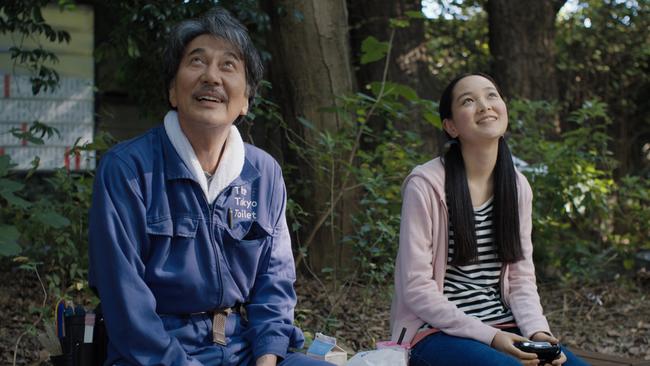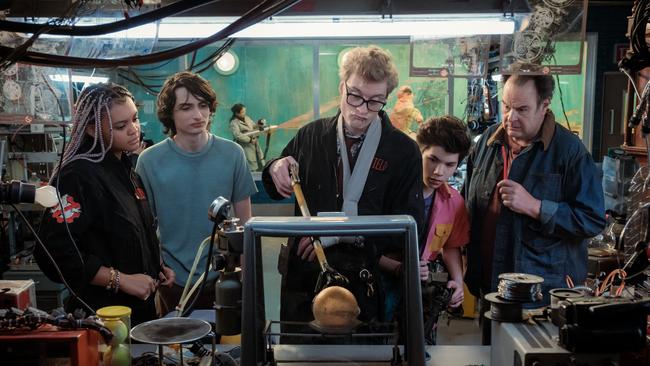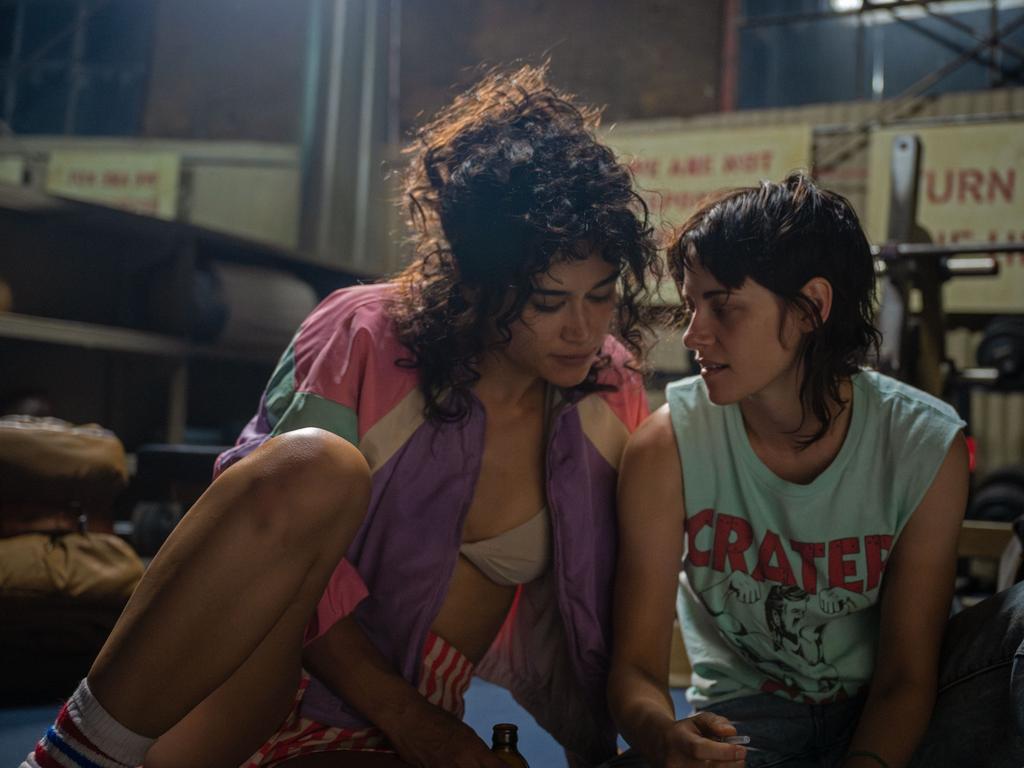Perfect Days: A cinematic and musical delight
When filmmaker Wim Wenders visited The Tokyo Toilet, his hosts thought he might make a documentary about the project. He decided to make a feature film, for which I thank him.

The bittersweet Japanese language drama Perfect Days, directed and co-written by German filmmaker Wim Wenders, is minimalist in structure and maximalist in ideas.
It centres on Hirayama (a superb Koji Yakusho), a single man who looks about 40. He lives alone, bar a collection of saplings he loves, in a basic apartment in Tokyo.
It opens with the start of his day: he wakes, clips his trim moustache, shaves with an electric razor, cleans his teeth, waters the trees-to-be and dons blue overalls.
The back of his uniform bears the name of his employer: The Tokyo Toilet. His job is to clean the 17 swish public toilets that were installed in the Shibuya district in 2020.
When Wenders visited the toilets, which were created by different designers from around the world, his hosts thought he might make a documentary about the project. He decided to make a feature film, for which I thank him.
Hirayama buys a can of iced coffee from a vending machine outside his apartment, climbs into his van and heads to work in the pre-dawn light. A devotee of 70s and 80s music, he slides a cassette tape into the stereo.
The first song we hear, in a film where the soundtrack is sweetly attuned to the story, is The House of the Rising Sun, by The Animals.
We see Hirayama at work, where he cleans the toilets assiduously and is tolerant of his puckish young assistant Takashi (Tokio Emoto), who tells him he overcleans and “It’s going to get dirty again anyway”.
We see him at his lunch break, photographing trees in a park, and after work, going to a public bathhouse, to an outdoor cafe for dinner and then home, where he reads in bed.
Just as he’s a fan of Western music he likes Western writers, such as William Faulkner and Patricia Highsmith. He wakes up the next morning and repeats. There’s a touch of Groundhog Day, except unlike Bill Murray’s acerbic weatherman, Hirayama rarely speaks. It’s the unacerbic look on his face that tells his story.
He smiles a lot. At the trees, at birdsong, at people he meets, and while doing his job, which he is proud of. There’s a telling scene where he rescues a little boy locked in a toilet cubicle. When he hands him to his mother, she doesn’t acknowledge him, let alone thank him. It’s as if he is invisible. He smiles and waves them goodbye.
The question is whether his invisibility is chosen or imposed. As we learn more about his life, mainly through an unexpected visit from his niece (Aris Nakano), we wonder if his outward contentment hides a deep sadness tied to a lack of fulfilment. His dreams, which we see in black and white, suggest his childhood, and particularly his mother.
The title is borrowed from Lou Reed’s song Perfect Day. As I watched I wondered at what point that song would appear. Would it be at the end of one of Hirayama’s ordinary, toilet-cleaning days to suggest his ease with living a little life?
When it does appear, the reason is simple and beautiful. Yet, as in Reed’s song, it’s also melancholic. The other songs are just as carefully placed, with some used more than once as moods shift.
Perfect Days was Japan’s entry for best international film at the 2024 Oscars, the first time the country has chosen a film directed by a non-Japanese filmmaker.
It is a quiet exploration of happiness and sadness that tests the idea of perfection. It lingers in the mind.
The film that came to mind as I watched was another minimalist drama, Paterson (2016), directed by Jim Jarmusch and starring Adam Driver.
As in that movie, this one has an outstanding ending. It shows Hirayama, shot in close up, driving his van and listening to Nina Simone singing Feeling Good:
“It’s a new dawn/ It’s a new day/ It’s a new life for me/ … And I’m feeling good.’’
Yakusho’s astonishing performance in that one scene alone is all you need to see to understand why he won best actor at the 2023 Cannes Film Festival.
Perfect Days (PG)
Japanese language with English subtitles
124 minutes
In cinemas from March 28
Ghost is in mechanics of the sequel
One of the challenges when it comes to busting ghosts is that they don’t die. The same can be said about some film franchises. Ghostbusters: Frozen Empire, the fifth instalment in the series that started in 1984, is at best a nostalgia trip.
Ghostbusters HQ is an abandoned New York fire station, as it was in the original, and the ghost-pursuing ectomobile and ghost-capturing proton packs are still in working order. Some of the old ghosts, such as Slimer, reappear.

It’s also a chance to put Bill Murray, Dan Aykroyd and Ernie Hudson in overalls with a Ghostbusters logo. Aykroyd and Hudson are OK but Murray phones it in. When he first sees the main ghost, which is tall and has horns, his line is, “Heads up. Tall, dark and horny.”
I suppose he can blame the scriptwriters (the director Gil Kenan, Oscar-nominated for his 2006 animated feature Monster House, and Jason Reitman) for that, but even so he’s a phantom in this movie, which is a sequel to its 2021 predecessor Ghostbusters: After Life.
That film was directed by Reitman, son of Ivan Reitman, who directed the 1984 original and its 1989 sequel. Reitman Jr’s non-Ghostbuster CV includes the Oscar-winning (for script) 2007 coming-of-age drama Juno.
So, there’s a fair bit of filmmaking talent and a lot of Ghostbuster genes in this movie, but it’s not enough. Indeed, the highlight is the comedic performance of a newcomer, Pakistani-American comedian and actor Kumail Nanjiani, who knows how to deliver a one-liner.
The plot unfolds in two halves. In the first, the new generation of Ghostbusters from the previous film have set up shop in the old fire station. They are Callie Spender (Carrie Coon), her now-partner Gary Grooberson (Paul Rudd) and her teenage children Trevor (Finn Wolfhard) and Phoebe (Mckenna Grace).
The fact that ghosts don’t die is identified as a problem. The ghost containment unit at HQ is bursting at the seams. “You’ve just been stuffing ghosts in here since 1984?’’ Gary asks.
The answer is yes and the first generation of Ghostbusters are working on a plan to build a new, far larger ghost jail. This brings the two generations together.
The second half is triggered by Nadeem Razmaadi (Nanjiani), who is a bit of a grifter, hocking one of his grandmother’s possessions. It’s an ancient metal ball that, unknown to anyone, contains the aforementioned horned ghost.
This powerful spectre, capable of turning everything and everyone into ice (hence the Frozen Empire subtitle), breaks out of the ball and vows to freeze and then shatter the world. The Ghostbusters, old and new, have to try to stop that from happening.
The first half is drawn-out and undramatic. The main theme is 15-year-old Phoebe having her own coming-of-age dramas. The second half is unimaginative. Ghostbusters fight ghost. The storytelling is laboured and the acting is pro forma. The jokes are thin, with only Nadeem, who has an unexpected power, providing the laughs.
The 1984 original was original and entertaining. This fifth instalment is not the former and barely the latter. The Ghostbusters song asks “Who ya gonna call?” My suggestion is call it quits, but I suspect there’s a ghost of a chance of that happening.
Ghostbusters: Frozen Empire (PG)
115 minutes
In cinemas
★★




To join the conversation, please log in. Don't have an account? Register
Join the conversation, you are commenting as Logout